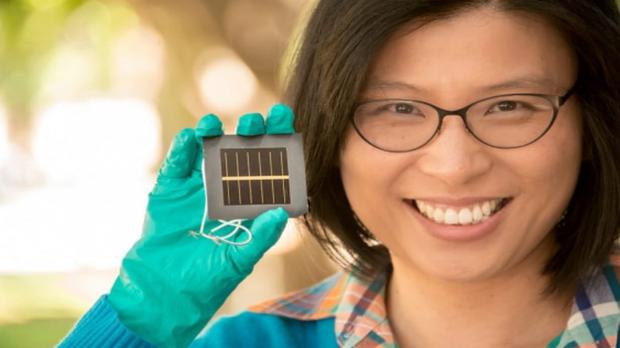
Breaking News
 John Solomon at Real America's Voice: Charlie Kirk is DEAD at 31! God Rest His Soul!
John Solomon at Real America's Voice: Charlie Kirk is DEAD at 31! God Rest His Soul!
 UPDATE: Suspect Who SHOT Charlie Kirk STILL AT LARGE...
UPDATE: Suspect Who SHOT Charlie Kirk STILL AT LARGE...
 At least 3 injured in shooting at Evergreen High School
At least 3 injured in shooting at Evergreen High School
 Chaffetz recounts terrifying moment Charlie Kirk was shot
Chaffetz recounts terrifying moment Charlie Kirk was shot
Top Tech News
 Methylene chloride (CH2Cl?) and acetone (C?H?O) create a powerful paint remover...
Methylene chloride (CH2Cl?) and acetone (C?H?O) create a powerful paint remover...
 Engineer Builds His Own X-Ray After Hospital Charges Him $69K
Engineer Builds His Own X-Ray After Hospital Charges Him $69K
 Researchers create 2D nanomaterials with up to nine metals for extreme conditions
Researchers create 2D nanomaterials with up to nine metals for extreme conditions
 The Evolution of Electric Motors: From Bulky to Lightweight, Efficient Powerhouses
The Evolution of Electric Motors: From Bulky to Lightweight, Efficient Powerhouses
 3D-Printing 'Glue Gun' Can Repair Bone Fractures During Surgery Filling-in the Gaps Around..
3D-Printing 'Glue Gun' Can Repair Bone Fractures During Surgery Filling-in the Gaps Around..
 Kevlar-like EV battery material dissolves after use to recycle itself
Kevlar-like EV battery material dissolves after use to recycle itself
 Laser connects plane and satellite in breakthrough air-to-space link
Laser connects plane and satellite in breakthrough air-to-space link
 Lucid Motors' World-Leading Electric Powertrain Breakdown with Emad Dlala and Eric Bach
Lucid Motors' World-Leading Electric Powertrain Breakdown with Emad Dlala and Eric Bach
 Murder, UFOs & Antigravity Tech -- What's Really Happening at Huntsville, Alabama's Space Po
Murder, UFOs & Antigravity Tech -- What's Really Happening at Huntsville, Alabama's Space Po
New efficiency record for large perovskite solar cell

A team at the University of New South Wales (UNSW) in Sydney, Australia claims to have achieved a 12.1 percent energy conversion efficiency rating for a 16 cm2 (2.5 sq in) perovskite solar cell, which is at least 10 times the size of current certified high-efficiency perovskite cells.
In the last year or so, we've seen other smaller perovskite cells and some hybrid combinations hit efficiency levels above 20 percent. The UNSW team also achieved 18 percent efficiency for a 1.2 cm2 (0.2 sq in) single perovskite cell, and 11.5 percent for a 16 cm2 (2.5 sq in) four-cell perovskite mini-module.
"Perovskites came out of nowhere in 2009, with an efficiency rating of 3.8 percent, and have since grown in leaps and bounds," said Anita Ho-Baillie, a Senior Research Fellow at the UNSW's Australian Centre for Advanced Photovoltaics. "I think we can get to 24 percent within a year or so."

 Tiny briefcase engine boosts EV range beyond battery power
Tiny briefcase engine boosts EV range beyond battery power 

